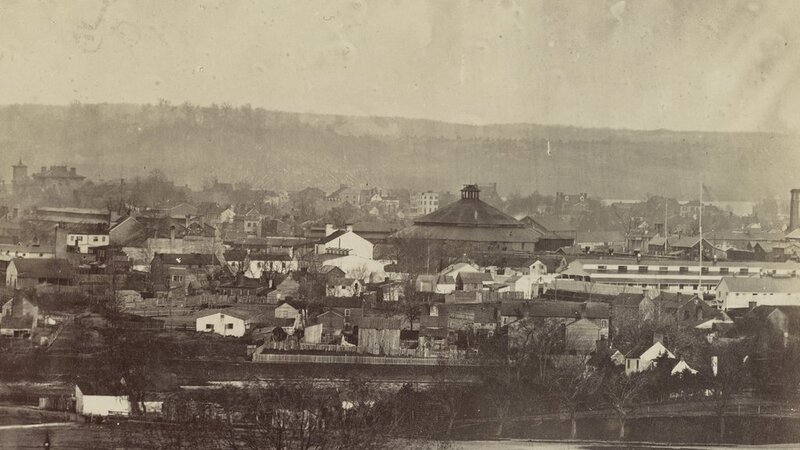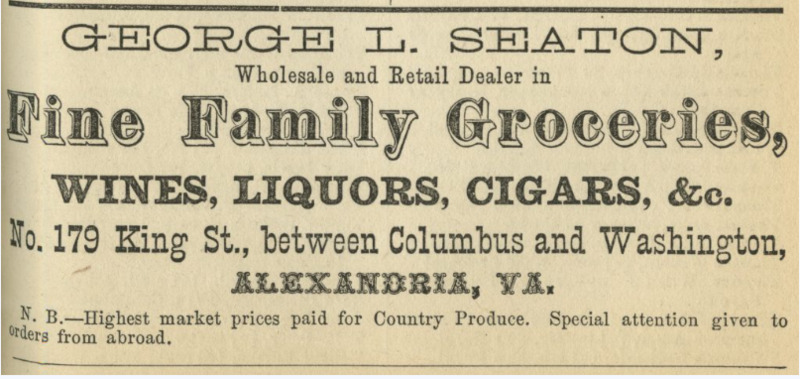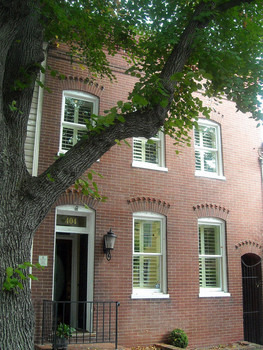Civil War and Reconstruction
Alexandria, as part of Virginia, formally left the United States on May 23, 1861. On May 24th Union troops occupied the city and stayed until the end of the war. This made Alexandria the longest occupied city during the war.
Because of Alexandria’s location and the heavy military presence a large influx of newly freed “contraband” came to reside within its borders. [1] The African American population exploded. The population of African Americans in all of the neighborhoods grew and flourished. Hayti and neighboring Berg, and Bottoms experienced the largest growth. There were many jobs and opportunities and a level of protection because of the Union occupation.
George Seaton, a free African American master carpenter, built many buildings and homes throughout the city which he sold or built for other free African American. [2] George Seaton was not only a master carpenter, but a store owner and community leader. As a builder and community leader, Seaton built several important buildings in Alexandria, including Odd Fellows Hall, the Seaton School for Boys, and the Hallowell School for Girls. He also helped found the Free School Society of Alexandria, the Colored YMCA and the Colored Building Association. [3] His home is still standing and is on the national historic registry. [4]
During Reconstruction, while Virginia was still a presence of martial law, there was an umbrella of equality thinking and opportunities that were not available before or after reconstruction. It was in the spirit of post war thinking that Alexandria elected George Seaton to the Virginia General Assembly in 1869 for one term. He was the first African American from Alexandria to have that distinction. That term was fruitful in that the 15th Amendment was passed, giving all men access to vote regardless of race.
Many stories could be uncovered if we focus on the citizens that are at all levels of society. Those that achieve greatness and great things and those that strive to do the honorable and just things and get by. Every cog in the wheel has a story to tell.
[1] “Alexandria: The Crossroads of the Civil War | Real Stories: People and Places | Uncover the History | Mercy Street | PBS,” Alexandria: The Crossroads of the Civil War | Real Stories: People and Places | Uncover the History | Mercy Street | PBS, accessed November 20, 2022, http://www.pbs.org/mercy-street/uncover-history/real-people-places/alexandria/
[2] Blomberg, Belinda .1988 Free Black Adaptive Responses to the Antebellum Urban Environment: Neighborhood Formation and Socioeconomic Stratification in Alexandria, Virginia, 1790-1850. Doctoral dissertation, Department of Anthropology, American University, Washington, DC. University Microfilms International, Ann Arbor, MI.
[3] Marianne E. Julienne, “George Lewis Seaton (ca. 1822–1881),” Encyclopedia Virginia (blog), accessed November 20, 2022, https://encyclopediavirginia.org/entries/seaton-george-lewis-ca-1822-1881/.
[4] “George Lewis Seaton House,” in Wikipedia, May 28, 2022, https://en.wikipedia.org/w/index.php?title=George_Lewis_Seaton_House&oldid=1090194148.




